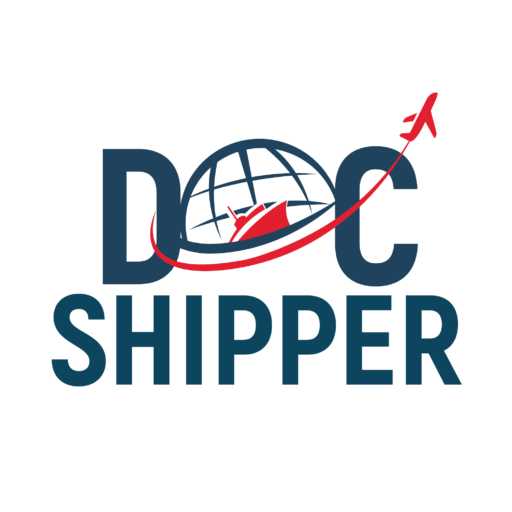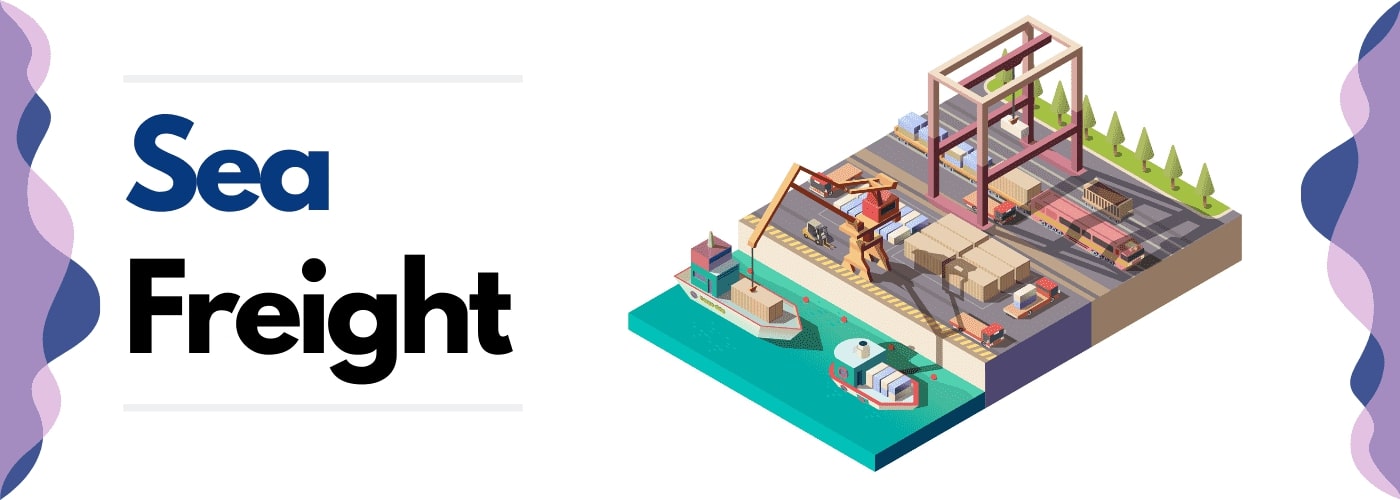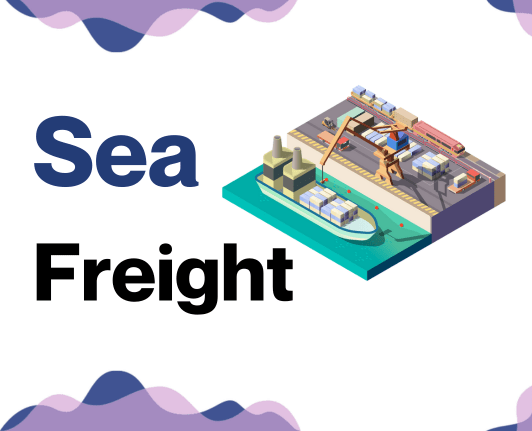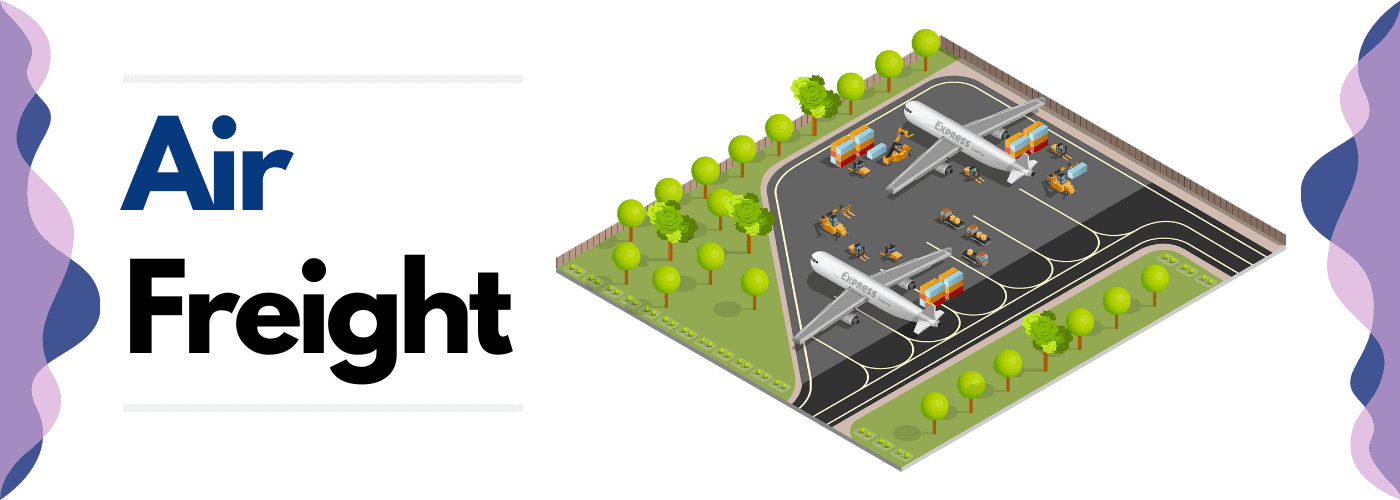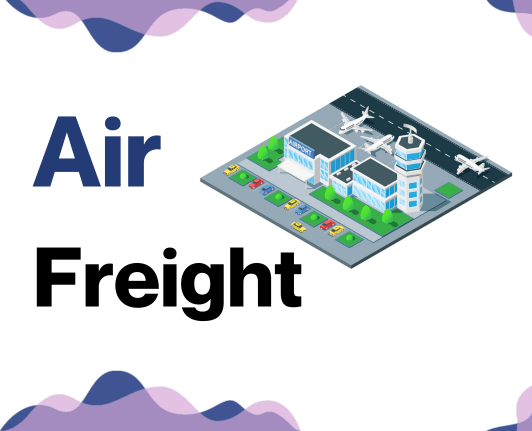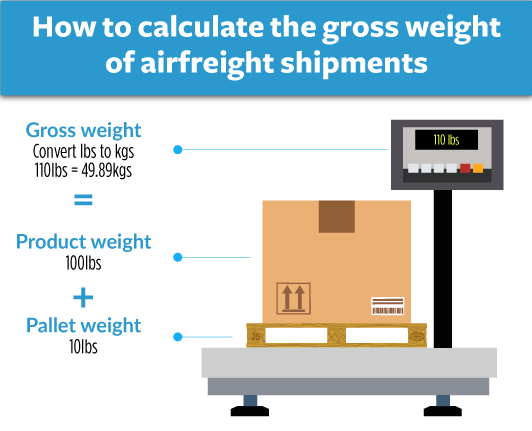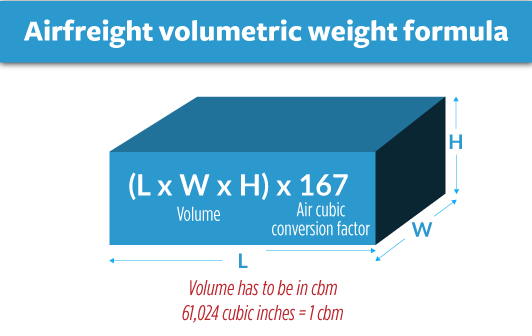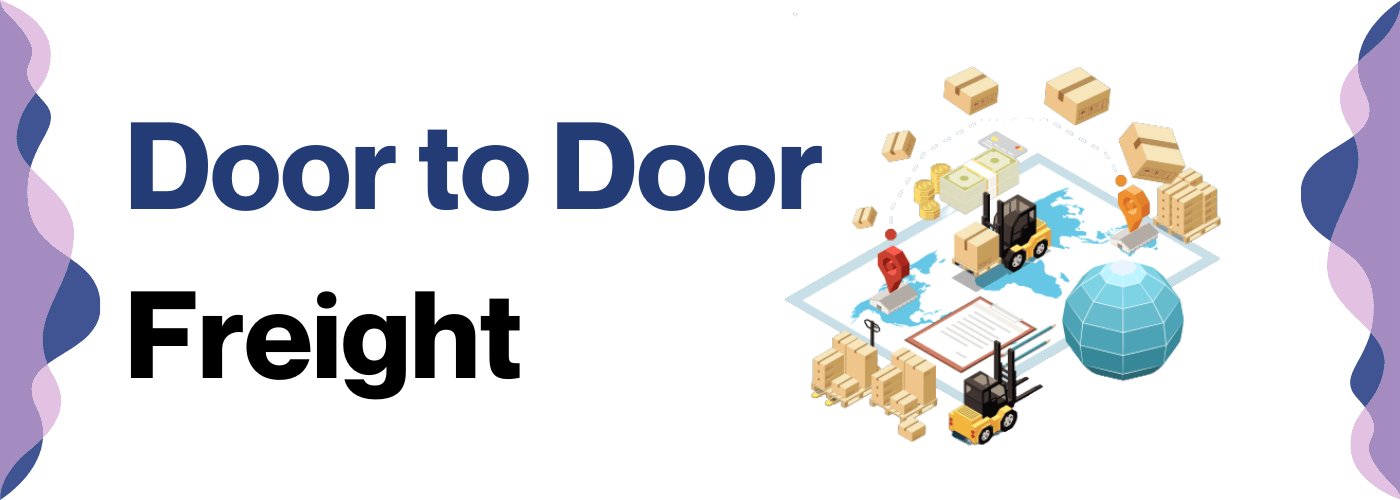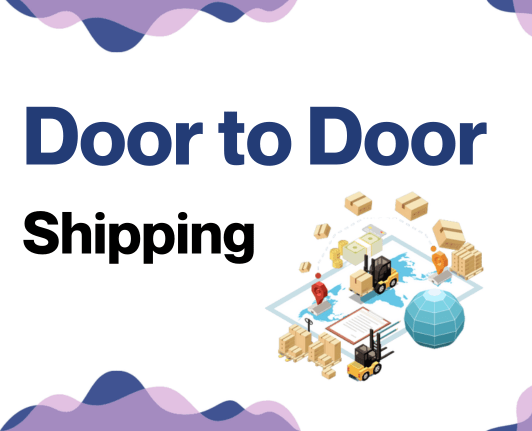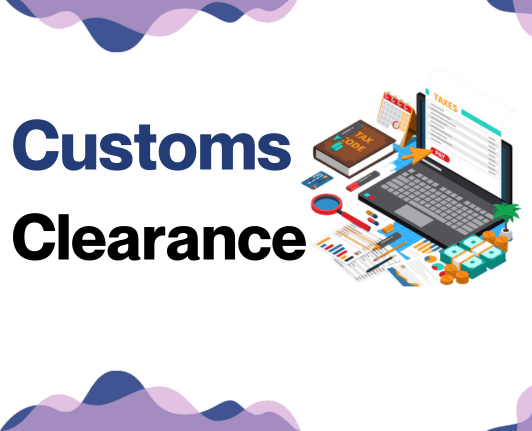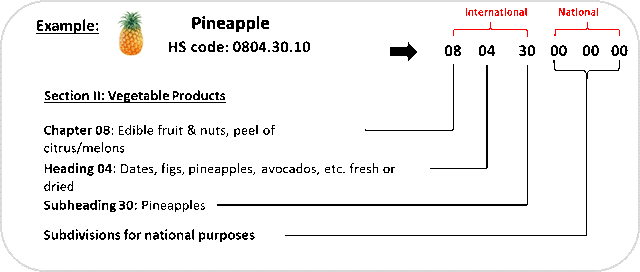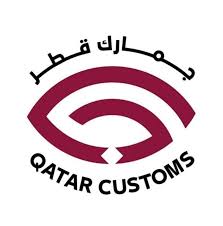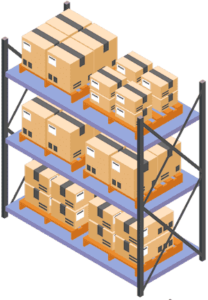Moving goods between Qatar and Lebanon can sometimes feel like juggling flaming swords on a unicycle. It's an intricate dance, managing confusing freight rates, frustrating transit times, and perplexing customs regulations. This comprehensive guide is designed to shed light on this complex process, clearly explaining different types of freight options including air, sea, road, and rail. We'll take a deep dive into customs clearance procedures, duties and taxes - presenting clear, actionable advice for businesses looking to streamline their international freight. Unpack the details behind transit times and demystify the customs clearance process. Learn to predict and manage costs by understanding duty rates and taxes. If the process still feels overwhelming, let DocShipper handle it for you! As an international freight forwarder, we pride ourselves on turning challenges into success stories, managing every step of your shipping needs.
Which are the different modes of transportation between Qatar and Lebanon?
Imagine plotting a journey from Qatar to Lebanon; think of them as neighbors who share no direct fence! The Arabian Sea might cut a tranquil path between them, but road and rail options hit a snag here, unfortunately. Still, don't fret! Air and sea transport leap out as your practical champions. Deciding your knight in shining armor depends on the nature of your shipment. Speedy deliveries might well prefer the cloud's highway, while hefty loads could opt for seafaring adventures. Whichever path you tread, choosing the optimal method can mean the difference between a logistic dream and a shipping nightmare!
How can DocShipper help?
Shipping from Qatar to Lebanon? DocShipper has got you covered. With our expertise in organizing transport, handling customs proceedings, and managing administrative tasks, we ensure your goods reach safely and on time. Why wait? Reach out to our consultants for a free estimate in less than 24 hours. Help is just a phone call away!
DocShipper Tip: Sea freight might be the best solution for you if:
- You're dealing with hefty quantities or large-scale goods. Sea freight is your go-to for maximizing space without stretching your budget.
- Your cargo doesn't have an urgent deadline, as sea freight typically has longer transit times compared to air or rail.
- Your shipping routes are between major ports, allowing you to leverage the extensive global network of sea shipping lanes.
Sea freight between Qatar and Lebanon
Ocean shipping between Qatar and Lebanon holds immense potential, epitomized by their bustling trade relations and a plethora of cargo ports bridging these two commercial hotspots. Ever wondered about the hive of activity at Doha Port or Beirut Port? It's largely thanks to the sea-freight traffic crisscrossing their waters, propelling the growth engines of both nations. While the shimmering Qatari skyline symbolizes petroleum and gas exports, Lebanon's vibrant industry hubs majorly handle agricultural produce.
Yet, there's no denying the tricky path that businesses navigate in actuality. Heart-wrenching tales of missed timelines, customs confusion, and cost overruns due to missteps in shipping dot the landscape. And yes, sea freight might be the tortoise in the transportation race, but remember, it's often the uncontested champion of cost-effectiveness when handling large volumes.
Here's where we come in. With a chest full of tried-and-tested strategies and lesser-known specifics, we're all set to turn your shipping experience from Qatar to Lebanon into a smooth sailing journey. Stay tuned as we whisk away those pain points and embrace the realm of seamless shipping. Buckle up, we're just getting started!
Main shipping ports in Qatar
Hamad Port
Location and Volume: Based in Umm Al-Houl, Qatar, Hamad Port plays a pivotal role in boosting international trade and diversifying the economy of the country. Handling over one million TEUs (Twenty-foot Equivalent Units) annually, Hamad is one of the largest ports in the Middle East.
Key Trading Partners and Strategic Importance: Hamad Port has a notable position globally, significantly enhancing Qatar's trade relations with countries around the world, most notably in Asia and Europe. The port's strategic location makes it a gateway to the world.
Context for Businesses: If your business is contemplating expanding in Asian and European markets, incorporating Hamad Port into your strategy could be instrumental. Boasting state-of-the-art facilities and direct shipping lines to many countries, it makes shipping logistics smoother and more efficient.
Ras Laffan Industrial City
Location and Volume: Ras Laffan Industrial City, in the North-Eastern part of Qatar, accommodates one of the world's largest facilities for production of liquefied natural gas (LNG). While it doesn't operate on TEUs like traditional container ports, the scope of operations are significant, making it an essential player in the global LNG market.
Key Trading Partners and Strategic Importance: Ras Laffan plays a leading role in Qatar's natural gas industry, exporting products to key trading partners globally. Its strategic importance lies in its capacity to handle large quantities of LNG.
Context for Businesses: If your business operates in the energy industry, especially LNG, Ras Laffan could be a key consideration in your shipping strategy. Its dedicated infrastructure for LNG export makes it a global leader in this domain.
Mesaieed Port
Location and Volume: Situated in the southeastern part of Qatar, Mesaieed Port is integral to heavy industries, particularly in hydrocarbons. Its volume figures may not mirror traditional container ports, but it is a hub for industrial shipping.
Key Trading Partners and Strategic Importance: Mesaieed Port is home to some of the largest industries in Qatar, including Qatar Petroleum, which exports hydrocarbon products to countries globally.
Context for Businesses: For businesses dealing with heavy industries like hydrocarbons, Mesaieed Port could be a substantial part of your logistics strategy. Its specialty in handling, storing, and shipping of such products, along with its proximity to major industrial units, align it well with your specific needs.
Main shipping ports in Lebanon
Location and Volume: Situated in the heart of the Mediterranean, the Port of Beirut plays a crucial role in Lebanon's economy and is the busiest and most vital port in the country. It handles nearly one million TEU annually.
Key Trading Partners and Strategic Importance: The port has trading relationships with several countries, with its primary trading partners being Syria, Saudi Arabia, the UAE, and China. The port's strategic importance is underscored by its centrality to East-West trade, having played a key role in the Silk Road Initiative.
Context for Businesses: If your business is keen on penetrating Middle Eastern or European markets, incorporating the Port of Beirut into your shipping strategy could be advantageous because of its central location and extensive trading partnerships.
Port of Tripoli
Location and Volume: Located in northern Lebanon, the Port of Tripoli is the second-largest port in the country and handles around 250,000 TEU per year.
Key Trading Partners and Strategic Importance: The port has strong trading ties with Turkey, Italy, and Egypt. It also offers a strategic alternative to the Port of Beirut, serving as a gateway to the Mediterranean and Europe, especially after the 2020 explosion at the Port of Beirut.
Context for Businesses: For businesses operating in North Africa and Europe, the Port of Tripoli is significantly valuable due to its geostrategic location, opening up possibilities to these growing markets.
Port of Sidon
Location and Volume: The Port of Sidon, located in southern Lebanon, is a smaller port with a volume of approximately 50,000 TEU per year.
Key Trading Partners and Strategic Importance: This port's key trading partners are typically within the Middle East, including Saudi Arabia, Jordan, and Syria. It primarily deals with the import and export of local goods, intricately tied to Lebanon's agricultural sector.
Context for Businesses: If your business exports fresh produce or other perishable goods, focusing on the Port of Sidon could be advantageous due to its established import and export routes with key Middle Eastern markets.
Should I choose FCL or LCL when shipping between Qatar and Lebanon?
Choosing between Full Container Load (FCL) and Less than Container Load (LCL) - often known as consolidation, is a pivotal decision in your sea freight journey from Qatar to Lebanon. Why? Because this choice directly affects your cargo's cost, delivery time, and overall shipping success. So, whether you're shipping large volumes or smaller consignments, understanding the benefits and considerations of each option helps you make the most cost-effective, efficient, and safest choice. Stick around; let us break it down for you so you can sail smoothly through your shipping adventure.
LCL: Less than Container Load
Definition: Less than Container Load (LCL) shipping is a method of transporting goods that don't require the space of a full container. It involves merging shipments from multiple customers in a single container, making it a cost-efficient solution for shipping smaller volumes.
When to Use:
LCL shipping is ideal when your cargo is less than 13-15 CBM. This is because you only pay for the space you use, offering flexibility and affordability for lower volume shipments.
Example:
Consider a business in Qatar needing to send 10 CBM of electronic components to a buyer in Lebanon. The volume isn't sufficient to fill an entire container, thus shipping by LCL proves to be the most efficient choice, both economically and logistically.
Cost Implications:
While the LCL cost per CBM is usually higher than full-container load (FCL), the overall expense can be less since you're only paying for the space you use. However, there can be additional costs such as deconsolidation or handling fees at Lebanon's port. Always obtain an LCL shipping quote from your freight forwarder to ensure the total cost fits your budget. Remember, understanding your LCL freight requirements can lead to substantial savings.
FCL: Full Container Load
Definition: FCL or Full Container Load is a type of ocean freight where an entire 20'ft or 40'ft container is exclusively reserved for your shipment.
Using FCL shipping is ideal when your cargo volume exceeds 13/14/15 CBM, as it offers cost-efficiency for larger cargo, with a single fcl shipping quote covering the entire container.
Take, for example, a large furniture manufacturer who needs to ship their products from Qatar to Lebanon. The size and quantity of the furniture pieces fill more than half of a 40'ft container, making FCL a suitable choice in order to eliminate the risk of mishandling and to keep goods secure, as the fcl container remains sealed from origin to destination.
The cost implications of opting for FCL shipping over LCL (Less Container Load) lean more towards affordability, especially for high volume cargo. Given that an FCL shipping quote typically provides a flat rate for the whole container, it's usually cheaper than paying for the volume your goods occupy within a shared container, which is the case with LCL. This choice also enhances the security and integrity of your shipment as it remains closed throughout the process.
Unlock hassle-free shipping
Struggling to choose between consolidation or a full container for your shipping needs from Qatar to Lebanon? Let DocShipper assist! Our freight forwarding services are designed to make cargo shipping hassle-free. Our ocean freight experts consider factors like volume, destination, and type of goods to help select the perfect shipping method for you. Shipping needn't be a puzzle with DocShipper. Connect with us for a free estimate and let us handle the complexities. Your seamless shipping experience is just one click away!
How long does sea freight take between Qatar and Lebanon?
Sea freight between Qatar and Lebanon typically takes an average time, with factors like specific ports used, weight of the shipment, and the nature of the goods playing a crucial role in transit times. For an accurate and custom quote, it's highly suggested you reach out to a reputable freight forwarder like DocShipper.
Here is an approximate table of average transit times between the main ports in both countries:
| Qatar Ports | Lebanon Ports | Average Transit Time |
| Hamad Port | Port of Beirut | 19 |
| Ras Laffan | Port of Tripoli | 15 |
| Mesaieed | Port of Sidon | 15 |
| Doha Port | Port of Tyre | 15 |
*Please note that the given times are averages and actual transit times may vary. Always consult with a freight forwarder for precise information.
How much does it cost to ship a container between Qatar and Lebanon?
Shipping a container from Qatar to Lebanon? Ocean freight rates can swing widely, with shipping cost per CBM running the gamut due to variables like load and destination points, the carrier involved, the type of goods, and market fluctuations. As such, it's challenging to pin down a specific price. But no worries - each of our freight requests is evaluated individually. Our dedicated shipping specialists will partner with you to identify the most competitive rates available, customizing quotes to fit your transportation needs. Optimum cost-efficiency sealed with specialist supervision - that's our pledge.
Special transportation services
Out of Gauge (OOG) Container
Definition: An Out of Gauge (OOG) container is a type of shipping container designed for oversized or overweight cargo that goes beyond the standard container size dimensions. They efficiently accommodate large machinery, construction equipment, or big vehicles.
Suitable for: Enormous goods that don't fit into standard shipping containers.
Examples: Heavy construction equipment, windmill wings, industrial machinery.
Why it might be the best choice for you: If your requirements revolve around transporting oversized goods, opting for an OOG container can provide comprehensive protection while ensuring safe delivery from Qatar to Lebanon.
Break Bulk
Definition: Break bulk is a shipment of loose cargo loaded individually rather than in containers. It involves segregating different categories of goods and loading, generally using cranes.
Suitable for: Oversized or heavyweight goods that cannot be transferred into a container.
Examples: Steel pipes, heavy machinery, construction equipment, or wooden cases.
Why it might be the best choice for you: If your cargo consists of oversized or heavyweight items, break bulk can be an ideal choice. This method offers flexibility in dealing with cargo of varied shapes and weights.
Dry Bulk
Definition: Dry bulk is a term used to describe commodities shipped in large quantities, without packaging, and in a loose form. These items are typically homogenous in nature - grain, coal, or gravel, for instance.
Suitable for: Bulk goods transported in high volume.
Examples: Grains, coal, cement, sugar, and other loose cargoes.
Why it might be the best choice for you: If you're looking to transport mass quantities of homogenous goods and are more concerned about the cost-effectiveness of shipping, choosing dry bulk can be an appropriate decision.
Roll-on/Roll-off (Ro-Ro)
Definition: Roll-on/Roll-off (Ro-Ro) shipping is a method where vehicles are driven on and off a specialized ro-ro vessel. This process is typically used for wheeled cargo.
Suitable for: Wheeled cargo and automobiles.
Examples: Cars, trucks, trailers, or rail cars.
Why it might be the best choice for you: When dealing with vehicles or wheeled cargo, the roll-on/roll-off option ensures safety and ease of handling. It's convenient, efficient, and minimizes the risk of cargo damage.
Reefer Containers
Definition: Reefer containers are used for goods that need to be transported at specific temperatures. They are essentially refrigerated containers.
Suitable for: Temperature-sensitive goods.
Examples: Fruits, pharmaceuticals, dairy products, or seafood.
Why it might be the best choice for you: Reefer containers can be your to-go solution if you have perishable or temperature-sensitive commodities. These containers maintain a fixed temperature throughout the transit, ensuring your goods reach Lebanon from Qatar in pristine condition.
Finding the right sea freight option can be challenging. DocShipper is here to guide you every step of the way during your journey of shipping goods from Qatar to Lebanon. If you need personalized advice or a free shipping quote, reach out to us. We guarantee a response in under 24 hours. Let us assist you in meeting your international shipping needs with ease and efficiency.
DocShipper Tip: Air freight might be the best solution for you if:
- You're up against the clock or have a non-negotiable delivery date. Air freight is your fastest bet for meeting tight timelines.
- Your shipment is on the smaller side, falling below 2 CBM. Air freight is particularly well-suited for compact cargo loads.
- Your goods are destined for locations that aren't well-served by maritime or rail options. Air freight expands your reach by connecting you to a vast array of international airports.
Air freight between Qatar and Lebanon
Air freight between Qatar and Lebanon can be a speedy and reliable solution, particularly suitable for compact, high-value items. Consider delicate electronics or vital pharmaceutical products; air freight keeps them secure and rapidly on the move. But it's not all smooth skies! Many shippers bobble the ball when evaluating air freight costs. Missteps, like using incorrect weight formulas when estimating goods' price, can have your budget skyrocketing faster than your shipment! Couple this with a lack of know-how on industry best practices, and you could find your costs zooming out of control. Stay with us as we delve into these common pitfalls and guide you on how to keep your air freight expenses grounded.
Air Cargo vs Express Air Freight: How should I ship?
Staring at a jigsaw puzzle of freight options for your business needs can feel overwhelming, right? Fret not! Let's break it down—think of Air Cargo like carpooling, where your goods hitch a ride in a commercial airline with goods from other businesses, while Express Air Freight is like chartering a private luxury jet exclusively for your goods. Simple as that.
Should I choose Air Cargo between Qatar and Lebanon?
As a business seeking to transport goods between Qatar and Lebanon, choosing air cargo could be an ideal solution for you. Airlines like Qatar Airways and Middle East Airlines are renowned in this sector, guaranteeing cost-effectiveness and reliability. However, bear in mind that due to their fixed schedules, transit times might be longer. Importantly, this option becomes more attractive if you're shipping at least 100/150 kg (220/330 lbs) of cargo. Consider your budget and shipment size to decide if this is the right choice for your shipping needs.
Should I choose Express Air Freight between Qatar and Lebanon?
Opting for express air freight, a premium service using cargo-only planes, may streamline your shipping experience between Qatar and Lebanon. This suits shipments weighing under 100/150 kg (220/330 lbs) or less than 1 CBM, promising speed, reliability, and real-time tracking. Notable international courier firms such as FedEx , UPS, and DHL offer these services. So, if you value swift delivery and attentive customer service, this choice might be perfect for your business.
Main international airports in Qatar
Hamad International Airport
Cargo Volume: Hamad International Airport moved nearly 2 million tonnes of air freight in 2020, positioning it as one of the major cargo hubs in the Middle East.
Key Trading Partners: Its key trade partners include China, USA, Australia, India, and various European countries.
Strategic Importance: Located in Doha, the airport serves as a primary hub for Qatar Airways and offers fast, efficient connections to over 150 destinations worldwide. Its central position between East and West markets is particularly beneficial.
Notable Features: The airport has a dedicated freight terminal, express parcel handling, and multiple cargo agents. Advanced technology for storage, handling, and tracking optimizes performance and ensures timely delivery.
For Your Business: With a vast network and an extensive list of services, Hamad International Airport could streamline your shipping process, opening up new markets for your business.
Qatar Airways Cargo's facility at Al Matar Street
Cargo Volume: While specific cargo volume for this facility is not publicly available, it's important to note that Qatar Airways Cargo is the second largest cargo airline worldwide by freight tonne-kilometres flown.
Key Trading Partners: It primarily serves the same trading partners as Hamad International as it's part of the same airways group, including China, USA, Australia, India, and numerous European countries.
Strategic Importance: This terminal also has strategic importance, not for its size but because it offers a variety of dedicated services including a Live Animal Center and a hub for Qatar Airways Cargo's transshipments.
Notable Features: It has a dedicated QR Pharma (temperature-controlled pharmaceuticals) hub, a live animal center, and a valuable goods area.
For Your Business: If you're shipping specialized goods like pharmaceuticals or live animals, this facility's dedicated and certified handling can offer your business peace of mind in ensuring the safety and well-being of your sensitive shipments.
Main international airports in Lebanon
Beirut-Rafic Hariri International Airport
Cargo Volume: Beirut-Rafic Hariri International Airport manages approximately 50% of Lebanon's total imports and exports, directly attributing to its status as one of the busiest cargo facilities in the Middle East.
Key Trading Partners: The airport mainly trades with countries including the United Arab Emirates, Saudi Arabia, Germany, France, and China.
Strategic Importance: Located in the country's capital, Beirut, this airport serves as a vital connection between the Middle East, Africa, and Europe. Its strategic location facilitates the rapid transport of goods making it a premier choice for businesses.
Notable Features: Beirut-Rafic Hariri International Airport is equipped with advanced cargo facilities, including refrigerated storage for perishable goods. It also operates 24/7, allowing for flexible shipping schedules and express cargo services.
For Your Business: If your business frequently ships to the Middle East, Africa, or Europe, leveraging the strategic locale and continuous operation of Beirut-Rafic Hariri International Airport could be beneficial. Moreover, its enhanced capabilities for handling perishable goods make it an excellent choice if you deal in food items, pharmaceuticals, or other time-sensitive products.
How long does air freight take between Qatar and Lebanon?
On average, air freight shipping between Qatar and Lebanon takes around 1 to 2 days. However, this transit time can fluctuate depending on specific departure and arrival airports, the weight of the cargo, and the types of goods being shipped. Variables such as these can either expedite or prolong shipping times. Always remember, for the most accurate timeline, it's best to consult with an experienced freight forwarder, such as DocShipper.
How much does it cost to ship a parcel between Qatar and Lebanon with air freight?
Determining air freight costs between Qatar and Lebanon isn't straightforward, with prices averaging $4-$8 per kg. Various factors, including airport proximity, parcel dimensions and weight, and nature of goods influence the final sum. However, fret not! We work diligently to effectively tailor the best rate for you, offering custom quotes based on your unique case- not just broad averages. We believe no two shipments are identical, and neither should their pricing be. Keen to take the guesswork out of air freight cost estimation? Contact us, and get your free, no-obligation quote in 24h or less!
What is the difference between volumetric and gross weight?
Gross weight refers to the full weight of a shipment, including product, packaging, and container - it's the number you get from putting your shipment on a scale. On the other hand, volumetric weight, also known as dimensional weight, is a method that takes account of the total space a shipment occupies during transit in consideration of its physical weight.
When calculating volumetric weight in air freight services, you need to measure the height, width, and depth of your package in centimeters. Multiply these three dimensions together to find the total cubic size, then divide it by a standard volumetric factor, usually 6000 for Air cargo. For express air freight services, the divisor is typically lower, around 5000.
For example, a 50kg package with a volumetric measurement of 40cm x 40cm x 40cm will have a volumetric weight of around 11kg for Air cargo (40 x 40 x 40 / 6000) or 13kg for express air freight (40 x 40 x 40 / 5000). But don't worry too much about remembering all these conversions - 1kg is approximately 2.2lbs, so the 50kg drum translates to around 110lbs, and the 11kg and 13kg volumetric weights are roughly 24.3lbs and 28.7lbs respectively.
Now, why do these calculations matter? Because when transporting goods via air, you are charged based on the heavier weight between gross and volumetric weights. Put simply, if the volumetric weight exceeds the actual weight, then the volumetric weight becomes the chargeable weight and vice versa. It's all about efficiency and getting the most out of the cargo space.
DocShipper tip: Door to Door might be the best solution for you if:
- You prioritize a smooth, hassle-free shipping experience from start to finish. Door-to-door services manage the entire journey, from initial collection to ultimate delivery.
- You appreciate streamlined communication and would rather deal with one person. A dedicated agent is usually assigned to oversee every detail of your door-to-door shipment.
- You want limit the number of touchpoints for your cargo. Door-to-door services reduce the frequency of transitions between various transport methods, thereby lowering the likelihood of damage or loss.
Door to door between Qatar and Lebanon
In the realm of international logistics, Door to Door shipping is your effective route, a sigh of relief for businesses. Imagine your cargo sailing seamlessly from Qatar to Lebanon, unhindered by tedious customs or mounting paperwork. This method offers unparalleled ease and absolute control. Intrigued? Great! Let's dive right in and examine the benefits closely.
Overview – Door to Door
Planning your next shipment from Qatar to Lebanon? With DocShipper's popular door-to-door service, sit back and let us handle everything. Enjoy peace of mind knowing our experts are navigating customs complexities, ensuring your goods arrive safely and on time. Although slightly more expensive, you trade off any logistical headaches for simplicity. However, meticulous documentation is required, but that's something we can help you handle. In this logistics journey, every roadblock is addressed, every corner expertly navigated. That's the DocShipper's promise of smooth sailing; irresistible, isn't it? Let's dive deeper into how this service achieves a stress-free logistics solution.
Why should I use a Door to Door service between Qatar and Lebanon?
Ever struggled to juggle the logistics of getting your goods from Qatar to Lebanon, and wished someone else could handle it? Well, wish no more! Here are 5 fantastic reasons why Door to Door service is your genie in a lamp.
1. Ease of Logistics: Kiss goodbye to shipping headaches. Door to Door service means your goods are picked up and delivered right where you need them. No need for you to sweat over the logistics yourself.
2. Timely Delivery: If you've got cargo that just can't wait, this service ensures your shipment meets its deadline, faster than a falcon catching its prey.
3. Specialized Care: Got something unusually large, oddly shaped, or extra fragile? Complicated cargo gets VIP treatment with Door to Door service, ensuring every aspect of the transport process is tailored to its specific needs.
4. All-round Convenience: Imagine not having to worry about organizing the trucking between different stages of the journey. Door to Door service means just that - it gets your goods from origin to destination, single-handedly.
5. Consistent Tracking: You can keep a steady eye on your shipment throughout every leg of its journey, getting real-time updates and peace of mind.
Put simply, Door to Door service between Qatar and Lebanon is like having your very own shipping Sherpa, doing the heavy carrying so you can focus on the summit of your business goals.
DocShipper – Door to Door specialist between Qatar and Lebanon
Experience seamless door-to-door shipping from Qatar to Lebanon with DocShipper. Entrust us with everything - packing, transport, customs clearance, and navigating through all shipping methods - for a stress-free, efficient process. Your dedicated Account Executive is ready to manage your logistics. For a free estimate in less than 24 hours, reach out to our consultants. Shipping made effortless with DocShipper.
Customs clearance in Lebanon for goods imported from Qatar
Customs clearance is the critical process of officially importing goods into a country. When bringing goods from Qatar to Lebanon, you'll likely encounter a bumpy road of complex duties, taxes, quotas, and demands for specific licenses. Misunderstanding or overlooking these aspects may cause unexpected fees, delays, or even have your precious cargo stalled at customs. The following sections will dig deep into these matters, preparing you to navigate smoothly past potential pitfalls. Don't risk getting caught out - DocShipper is ready to assist you throughout this process, for any type of goods, from anywhere in the world. Interested in an estimate? Reach out to our team with your goods' origin, value, and HS Code. Arming yourself with such knowledge can make the difference between smooth sailing and rough seas in international shipping.
How to calculate duties & taxes when importing from Qatar to Lebanon?
Estimating duties and taxes on products you're importing from Qatar to Lebanon can feel like threading a needle, especially if you're new to international shipping. The process, though complex, becomes much more manageable once you're familiar with the right terms and steps. Essentially, to calculate customs duties, you need to have certain details at hand. These include the country of origin, the Harmonized System (HS) code for the product, the Customs Value (essentially, the total value of the goods), and any Applicable Tariff Rates that are in place. Be aware, there might be other taxes and fees that could apply to your unique shipment. The first step in this journey is determining the country where your goods have been manufactured or produced. Take note, this could be different from the country you're importing from. This information is key as it's used to apply the correct duty rate.
Step 1 - Identify the Country of Origin
First, knowing your good's origin country is crucial for multiple reasons. One, it sets the baseline for the classification under the Harmonized System (HS) - the international standard for naming and categorizing all goods traded worldwide. Two, specific trade agreements that exist between Qatar and Lebanon can affect your customs duties. This country combination falls under the Greater Arab Free Trade Area (GAFTA), potentially meaning lower tariffs. Three, you avoid any unexpected surprises at the port. Familiarity with the trade map can give you an edge – knowing what sells easily and what has restrictions. Four, it helps address expectations around delivery timelines. Some nations have shorter or more extended customs procedures. Five, it supports ethical sourcing. In sectors where origin matters - such as food or precious stones - it can ensure compliance with regulations and norms.
Knowing the origin isn't just paperwork. It's your first step towards a smooth, efficient, and well-planned import process. Stay tuned to understand how customs value your goods, what final fees look like, and ways to keep those costs lean while ensuring a seamless journey for your products. Remember, success in the international trade arena starts with a solid understanding of basics - beginning with the country of origin.
Step 2 - Find the HS Code of your product
The Harmonized System Code, commonly referred to as the HS Code, is a universally standardized system of names and numbers aimed at classifying traded products. Developed by the World Customs Organization, it's used by customs authorities around the world to identify products and apply appropriate tariffs when they cross borders. Essentially, this system is the backbone of international trade, ensuring products are correctly classified and taxed.
So how do you find the HS Code for your products?
Normally, your suppliers would be the best starting point. They are familiar with the products they're exporting and should know the corresponding HS Code. However, if this isn't an option for you, there's a simple process you can follow to find it on your own.
Your first step is to use a tool such as the Harmonized Tariff Schedule . It's a user-friendly resource that lets you search for the HS Code of your product.
Simply navigate to the website, locate the search bar and enter your product name. The website will generate matches based on the information you provide.
Once the search results are displayed, your code can be found by checking the Heading/Subheading column.
Please note, accuracy when identifying the HS Code is of utmost importance. Any discrepancies or errors in the code can lead to delays in shipment and even potential fines. Therefore, be careful when selecting the most appropriate HS Code for your product.
Remember: An accurate HS Code means smoother shipping!
Here's an infographic showing you how to read an HS code.
Step 3 - Calculate the Customs Value
Understanding the customs value might seem a little tricky initially, but it's simply the total of three costs: product price, international shipping cost, and insurance cost. This distinguishes it from the product's baseline value. Suppose your product costs $100 and shipping, including insurance, stacks up to $20. In this case, the customs value amounts to $120. This specific value impacts the customs duty you'll need to pay. Hence, calculating the customs value accurately is critical in your journey of importing goods from Qatar to Lebanon. It's your key to avoiding unexpected costs and ensuring your freight forwarding experience stays within budget. Remember, this is a crucial step in the oft-complex world of customs clearance.
Step 4 - Figure out the applicable Import Tariff
In simple terms, an import tariff, also known as a customs duty, is a tax levied on goods imported into a country. In the context of Lebanon, a Specific Tariff method is used which calculates duties based on the physical characteristics of the goods.
To find the applicable tariff rate for products imported from Qatar to Lebanon, you need to:
1. Identify the Harmonized System (HS) code of your product.
2. Visit the website of Lebanon’s custom department and input the HS code.
3. Verify the goods' description to ensure it matches your product and then find the associated tariff rate.
As a practical example, consider the import of aluminium bars (HS code: 7604.29) from Qatar. Let's say the tariff associated with this HS code is 5%. Assuming a CIF (Cost, Insurance, and Freight) value of $10,000 for these goods, your import duty would be calculated as follows:
Duty = Tariff Rate x CIF value
= 5% x 10,000
= $500
So, for this import transaction, you would pay a customs duty of $500. Understanding the tariff rate for your product beforehand can help you budget more accurately, avoiding financial surprises during customs clearance.
Step 5 - Consider other Import Duties and Taxes
While shipping your goods from Qatar to Lebanon, beyond the standard tariff rate, be aware that you may face additional costs based on the product's origins and nature.
Take, for instance, the excise duty. This tax is heavily influenced by the type of commodity you're shipping. Let's say you're importing luxury goods like cigars; an excise duty may apply to these specific items.
Then there's the anti-dumping tax—a safeguard for local industries. If products are being sold significantly below their usual market price, anti-dumping taxes may be levied. As an example, imports of plastic kitchenware from China have previously resulted in such taxes.
But it's the VAT (Value Added Tax) that often represents the lion's share of additional costs. In Lebanon, VAT usually stands at 11%. So, if your shipment's overall cost (including tariff and freight) is $5000, you'll owe approximately $550 in VAT ($50000.11).
Remember, these are sample calculations. Always consult the latest customs tariffs and regulations for the most accurate information and get advice from experts if needed, as shipping costs can quickly add up to your business expenses.
Step 6 - Calculate the Customs Duties
Step 6 - Calculate the Customs Duties is certainly a crucial stride in your shipping journey from Qatar to Lebanon. Fortunately, it's relatively uncomplicated. The formula is Customs Value (actual cost of goods + insurance + shipping costs) X Customs duty (% based on your goods classification).
Consider this. You've shipped goods worth $10,000 with $1000 in insurance and shipping costs. The import tariff for your product is 10%. So, you calculate as follows: ($10,000+$1000) 10/100 = $1,100.
For duties involving VAT, it ramps up a notch. You add the VAT to the customs value before multiplying by the customs duty. For instance, if VAT is 19%, it calculates as: ($10,000+$1000+$1900) 10/100 = $1,290.
If anti-dumping and Excise Duty also apply, factor each in much the same way. Let's say anti-dumping tax at 5%, and Excise Duty at 3%: ($10,000+$1000+$1900+$500+$300) 10/100 = $1,370.
While navigating through the complex landscape of customs is doable, avoiding complexities and potential overcharges is where DocShipper can help. We streamline and simplify customs clearance for you, ensuring accuracy, full compliance, and speed. Contact us for a free quote in less than 24 hours and let's navigate your global shipping path together.
Does DocShipper charge customs fees?
DocShipper, functioning as a customs broker in Qatar and Lebanon, doesn't charge customs duties. There's a clear distinction between the customs clearance fees you pay us or any freight forwarder, and the customs duties and taxes that goes straight to the government. Just like doing your groceries, you only pay what's charged on the receipt and we mirror that procedure. We provide you all documents from customs showing the exact amount charged, ensuring trust and transparency. Think of us as partners guiding you through the complex process while safeguarding your interests.
Contact Details for Customs Authorities
Qatar Customs
Official Name: Qatar General Authority of Customs
Official Website: http://www.customs.gov.qa/
Required documents for customs clearance
Tackling customs often feels like wading through bureaucracy. Understand the essentials; Bill of Lading, Packing List, Certificate of Origin and CE standard documents help smooth the journey. Let's clarify their functions, so next time, they won't look so intimidating.
Bill of Lading
Picture the Bill of Lading as your golden ticket in international shipping between Qatar and Lebanon. It's a must-have, marking the crucial passage of goods from seller to buyer. Think of it like your receipt, acting as evidence in the legal bun-fight that can come with ownership disputes. And here's a hot tip - opt for the electronic, or telex, release. It speeds up transactions as it's hassle-free, faster than its paper counterparts, and can't get lost in the mail! For those of you shipping via air, don't forget the AWB - it's the air cargo version of this document. So, when you're juggling the logistics of international shipping, keep these documents at the top of your list. They just might save the day.
Packing List
Picture your shipment as a passenger on a long journey from Qatar to Lebanon. For a smooth trip, they'll need a passport—the same applies to your shipment, only it's called a Packing List. Whether you're shipping by sea or air, the Packing List serves as that essential travel document, providing key details about the journey.
Creating a Packing List is your responsibility as a shipper. Think of it as developing an ID for your goods, outlining what's inside the package, the total weight, and the overall value. Being precise matters! Imagine sending a shipment to Beirut and customs delays it because of weight discrepancies—it doesn't paint the best picture for your business!
Your Packing List's accuracy enhances your shipment's transparency and speeds up the strenuous customs process, enabling a seamless transfer. It's not just a piece of paper—it's your shipment's green light at the customs check point. Be accurate. Be swift. Keep shipping!
Commercial Invoice
Preparing your Commercial Invoice properly is vital when shipping goods from Qatar to Lebanon. This document must contain clear details of the seller, buyer, goods description, and total value. A well-prepared invoice not only accelerates customs clearance but also helps avoid discrepancies with other shipping documents. For example, if you're exporting fashion accessories, your invoice should correctly define each item, mentioning materials used, quantity, and the price per unit. An inconsistant presentation of this information can cause delays. So, double-check all facts, and ensure agreement with your Bill of Lading or Air Waybill. This careful attention can save your business from unsuspected expenses and time-wasting hold-ups at the border.
Certificate of Origin
In shipping goods from Qatar to Lebanon, the Certificate of Origin (COO) is your secret weapon. This shows Lebanon's customs that your goods were made in Qatar, helping you nab preferential duty rates. Say, you're shipping Qatari computers; your cargo will be smoother if the COO clearly says 'Made in Qatar.' Lebanon may also have certain restrictions on goods from certain countries, so a COO can clarify your goods' legitimacy, saving you from potential hitches. Remember - an accurate COO can be a game-changer for your shipping cost and speed. Double-check that country of manufacture? It's more powerful than you think!
Get Started with DocShipper
Navigating through customs can be overwhelming and time-consuming. Let DocShipper simplify this process for you. With our expert handling of all customs clearance steps, we can ensure smooth sailing for your goods from Qatar to Lebanon. Could you use a seamless, stress-free shipping experience? Reach out to us today - we promise a complimentary quote within 24 hours.
Prohibited and Restricted items when importing into Lebanon
When sending goods to Lebanon, deciphering the dos and don'ts of import can be frustrating. Stumbling upon the surprisingly restricted or totally prohibited items list can indeed be a business nightmare. Let's unravel these complexities and help you avoid any unnecessary shipping setbacks.
Restricted Products
- Animals and Animal Products: You need to apply for a Veterinary Health Certificate for animal products or pets from the Ministry of Agriculture in Lebanon.
- Pharmaceuticals and Medical Devices: If you're shipping these, you will have to apply for a Medical Device Approval from the Ministry Of Public Health Lebanon.
- Special Chemicals, Precursors, and Narcotics: To ship these, you will need to obtain a Narcotic License and a Precursor Chemical License from the Ministry Of Public Health Lebanon.
- Plant and Plant Products: For these items, you will have to apply for a Phytosanitary Certificate from the Ministry of Agriculture. Their website for applications is found here.
- Weapons, Ammunition, and Explosives: You're required to apply for an Import License from the Ministry of Interior and Municipalities of Lebanon if you're shipping these kinds of products.
- Precious Metals and Stones: You will need to apply for an Export or Transit Declaration License from the General Directorate of Lebanese Customs if you're transporting these. Their application site is here.
Remember, always double-check the exact licensing requirements with the appropriate government agencies when you're shipping your products internationally.
Prohibited products
- Narcotics and illegal drugs: This includes but is not limited to marijuana, heroin, cocaine, methamphetamine, and substances used in their production.
- Counterfeit money and goods: Lebanon strictly prohibits counterfeit currency and products. This includes fraudulent documentation, pirated goods, and imitation designer merchandise.
- Pornographic and obscene materials: This covers all forms of media including print, digital, audio, and video.
- Radioactive materials and nuclear waste: This is strictly regulated and not allowed to prevent health hazards and environmental pollution.
- Complete Vehicles and Vehicle Components: Imported vehicles older than eight years are not allowed along with non-conform automobile parts.
- Offensive weapons: Importation of firearms and other lethal weapons such as knives, knuckles, and ammunition are prohibited unless authorized by proper Lebanese authorities.
- Articles of antiquity and national heritage: The importation of cultural property and items of historical significance pertaining to Lebanese heritage is prohibited.
- Precious metals and stones (undeclared): It is illegal to import undeclared precious metals like gold, silver, and precious gemstones into Lebanon.
- Materials displaying hatred or incitement: Any form of media or materials that can incite religious or racial hatred is strictly banned.
- Certain agricultural products: Some agricultural products are prohibited to protect local agriculture and prevent the potential spread of harmful pests and diseases.
- All products containing the biocide dimethyl fumarate (DMF): In order to maintain public health safety, all products containing DMF are not allowed. It is typically found in certain anti-mould agents used in household items.
Please note: Always consult with your shipping carrier or a reliable logistics partner for the most accurate and up-to-date information since customs regulations and import restrictions can change on short notice.
Are there any trade agreements between Qatar and Lebanon?
Indeed, there are trade agreements in place between Qatar and Lebanon. They fall under the scope of the Greater Arab Free Trade Area (GAFTA), which supports businesses by eliminating customs duties. Currently, initiatives are in motion for increased maritime connectivity, potentially leading to enhanced trade opportunities in the future. However, always keep in mind that political dynamics can influence trade policies in the Middle East. Therefore, staying updated on regional trade developments is crucial to navigate any challenges that may emerge.
Qatar - Lebanon trade and economic relationship
Qatar and Lebanon share a significant economic and trade relationship dating back several decades. Qatar has often been a significant source of investment in Lebanon, particularly in sectors like real estate and infrastructure. Bilateral trade between the two nations has seen consistent growth, with Lebanon's primary exports to Qatar being fruits, vegetables, and other agri-products, whereas Qatar's primary exports to Lebanon are petroleum products, plastics, and chemical products.
In recent years, the two nations have emphasized strengthening ties, leading to noteworthy milestones like Qatari investments in Lebanon exceeding $1 billion. Moreover, the annual trade volume has witnessed a sharp increase, reaching approximately $250 million. Despite some recent challenges, these two nations continue to maintain robust and mutually beneficial economic ties. This background holds significant value while planning trade or shipping logistics between the two countries.
Your Next Step with DocShipper
Shipping goods between Qatar and Lebanon presents unique logistical hurdles. As experts in freight forwarding, DocShipper is your trusted partner to circumvent those challenges. From customs clearance to ensuring full compliance, leave the complexities to us. Don't let bureaucracy slow you down. Let DocShipper handle it. Connect with us today for a seamless shipping experience.
Additional logistics services
Unearth more than just shipping with DocShipper; explore our full suite of logistics solutions designed to streamline your supply chain from end to end. Let us handle it all, leaving you to focus on what you do best - running your business.
Warehousing and storage
Finding a trusted warehouse in Qatar or Lebanon can be as tricky as maintaining ideal conditions for your goods. Picture this: your temperature-sensitive products stored in perfect harmony! With us, you crack that code easily.
Packaging and repackaging
Proper packaging can be the difference between a successful or failed delivery from Qatar to Lebanon. Whether it's antiques or electronics, robust packaging protects your goods from the rough and tumble of transit. Count on a reliable agent to provide expert repackaging services tailored to each product. They might use bubble wraps for fragile porcelainware or double-boxes your high-value electronics. Trust proper packaging - save time, money, and avoid headaches.
Cargo insurance
Cargo insurance provides an important safety net when shipping goods. Unlike fire insurance, which only covers damages from fire, cargo insurance can cover various risks, from theft to damage in transit. Imagine your vessel encounters a rough sea, damaging your electronics shipment. This is where cargo insurance steps in, not just preventing financial loss but providing peace of mind during your freight's journey.
Supplier Management (Sourcing)
Looking to manufacture in Asia or East Europe? With DocShipper, you won't lose sleep over sourcing suppliers or tackling the procurement process. Our dynamic team bridges the language gap, making it simpler than ever to get your goods from Qatar to Lebanon, or vice versa.
Personal effects shipping
Shipping personal effects from Qatar to Lebanon doesn't have to be a stress fest. Imagine the relief when your grandma's bulky antique dresser or your fragile collection of heirloom china arrives undamaged. Professional teams expertly pack your precious items, showing care and flexibility to ensure a dignified arrival in Beirut or beyond. It's like sending your valuables on a first-class ticket, while savoring your cup of karak chai back in Doha.
Quality Control
Quality control safeguards your shipment from Qatar to Lebanon. Picture this: a load of customized furniture with unexpected defects arrives in Beirut, spelling disaster for a new restaurant opening. These inspections pinpoint issues before they become costly mistakes, ensuring your goods arrive in perfect condition, saving you hassle and unnecessary costs.
Product compliance services
Keeping your shipments on the right side of the law is crucial. Our Product Compliance Services ensure your goods meet destination regulations, taking the guesswork out of international trade. We conduct laboratory tests and sanction certification processes, saving you from tedious paperwork and potential violations. Picture this as an invisible liaison handling regulatory hurdles - your peace of mind, our priority.
FAQ | For 1st-time importers between Qatar and Lebanon
What is the necessary paperwork during shipping between Qatar and Lebanon?
To ship from Qatar to Lebanon, you'll need a bill of lading for sea freight or an air waybill if you choose air freight. We, at DocShipper, will handle these. Meanwhile, ensure you can provide us with your commercial invoice and a packing list. Depending on the nature of your goods, you might need to provide additional documents such as Material Safety Data Sheets (MSDS) or specific certifications. We're here to facilitate your shipping needs, so rest assured we'll guide you through each step.
Do I need a customs broker while importing in Lebanon?
While handling imports in Lebanon, we at DocShipper find it beneficial to utilize a customs broker. The reason behind this is the intricate process involved and the need to deliver a variety of mandatory documentation. With customs being a complicated realm to navigate, our expert assistance becomes invaluable. We take the weight off your shoulders by representing your shipment at customs and ensuring everything proceeds smoothly. This is a service we carry out routinely for a great majority of cargo shipments, aiming to mitigate any potential issues and expedite the process. Rest assured, our team is here to help your importation process to be as hassle-free as possible.
Can air freight be cheaper than sea freight between Qatar and Lebanon?
In determining whether air freight is cheaper than sea freight between Qatar and Lebanon, it's essential to consider various factors such as route, weight, and volume of the cargo. Typically, if your cargo is under 1.5 cubic meters or weighs less than 300kg (660 lbs), air freight might be a viable and possibly more cost-effective option for you. At DocShipper, we analyze these factors and provide tailored shipping solutions. Our dedicated account executives are always ready to guide you through cost-effective, efficient options for your freight-forwarding needs.
Do I need to pay insurance while importing my goods to Lebanon?
While providing our services, we want you to remember that insurance isn't mandatory when shipping goods, even to international locations like Lebanon. However, in our professional experience, we strongly recommend insuring your goods. It's a precautionary step that saves you from potential risks such as damage, loss, or theft during transport. Understandably, it’s an extra cost, but considering the wide range of incidents that can occur during shipping, it gives you reassurance and peace of mind. Thus, it’s better to be safe with insurance rather than risk the integrity of your precious goods.
What is the cheapest way to ship to Lebanon from Qatar?
Given the relatively short geographical distance between Qatar and Lebanon, sea freight is the cheapest shipping method we recommend. This economical option generally includes sharing space in a container, otherwise known as Less than Container Load (LCL). It's a trade-off between cost and time, as sea freight takes longer than air. Customs duties and taxes, however, will vary and must be factored into the final cost. Keep in mind, the cheapest shipping method may not always be the quickest or most efficient. It's crucial to balance cost, stability, and speed based on your specific needs.
EXW, FOB, or CIF?
Choosing between EXW, FOB, or CIF primarily depends on your relationship with your supplier. It's important to remember that suppliers may not be logistics professionals. Hence, entrusting this complex process to a dedicated freight forwarder like ourselves can help streamline the process. Many suppliers sell under EXW (from their factory door) or FOB terms (inclusive of local charges till the departure terminal). Regardless of these conditions, we are equipped to provide a comprehensive door-to-door service. By relying on our expertise, we can help manage both international freight and destination processes, simplifying your shipping experience.
Goods have arrived at my port in Lebanon, how do I get them delivered to the final destination?
Upon arrival of your goods at Lebanon's port, you can engage a custom broker or freight forwarder to help with terminal clearance, import charges, and delivery if you've chosen CIF/CFR incoterms. Alternatively, we at DocShipper offer you the option of a hassle-free DAP term, where we manage the entire process for you. Always ensure you discuss these details with your dedicated account executive for clarity and convenience.
Does your quotation include all cost?
Indeed, at DocShipper, we ensure full transparency with our quotations, which encompass all costs except for duties and taxes at your destination. However, we'd be glad to help estimate these additional charges. You can reach out to your dedicated account executive for this task. Rest assured, there'll be no hidden fees to catch you off guard, we're committed to maintaining clarity at all times.
